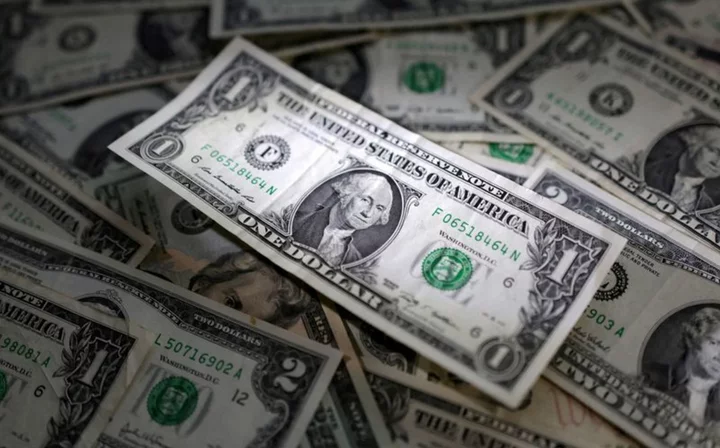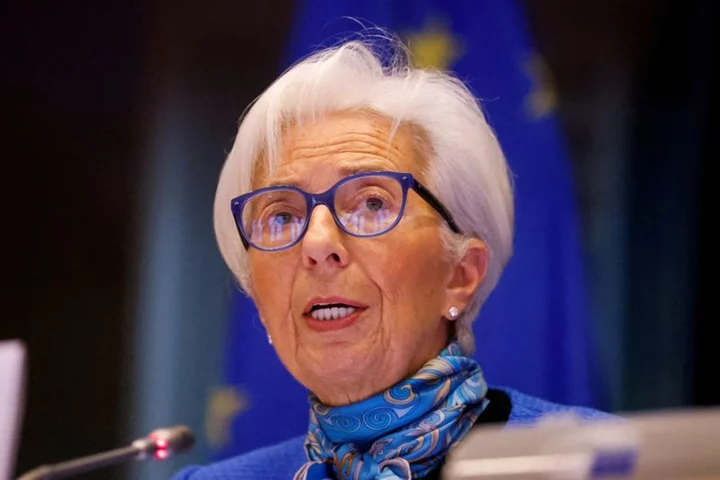LONDON The U.S. 10-year Treasury yield briefly reached 5% for the first time since 2007, marking a fresh milestone in a relentless push higher for government borrowing costs.
Further signs of resilience in the U.S. economy help explain the latest sell off in Treasuries, as traders have unwound bets the U.S. Federal Reserve would soon start to lower interest rates.
Earlier on Thursday, Fed Chair Jerome Powell said the economy's strength and continued tight labor markets could require still tougher borrowing conditions to control inflation, although rising market interest rates could make action by the central bank itself less necessary.
Treasuries have also been hurt by expectations for higher government debt levels and increased bond sales.
COMMENTS:
MICHAEL SCHULMAN, PARTNER & CIO, RUNNING POINT CAPITAL ADVISORS, EL SEGUNDO, CALIFORNIA
"I see the 5% as a psychological threshold but I’ve been telling my clients for over a year that we are in a higher for longer environment, that inflation is going to stay around, higher than it has in the past, and with it interest rates also."
"Some people will look at this number and fear that things might get worse .. simultaneously other people look at these high rates and think that historically this is time to invest."
NOAH WISE, PORTFOLIO MANAGER, ALLSPRING GLOBAL INVESTMENTS, CHARLOTTE, NC
“I do think that (Powell’s) comments today are definitely a big factor behind the move to 5%. He highlighted what everyone has seen with the strong economic growth data and the retail sales figure that came out. He also signaled that he is fine with tightening coming as a result of longer end rates going higher, even if it means that the shorter end rates don’t need to go as high.”
BRIAN JACOBSEN, CHIEF ECONOMIST, ANNEX WEALTH MANAGEMENT, MENOMONEE FALLS, WISCONSIN
"The move up has been driven by the Fed leaving the market as a price insensitive buyer. Foreign demand has also waned. Combined with surprisingly large issuance from the deficit, it’s a classic supply and demand effect."
"Some people think it’s because prospective growth is much stronger, but growth has never worked in explaining the level of yields. Growth stories are just that, stories. Just like how the market forced the Fed to stop quantitative tightening in 2019, it might be forcing the Fed to rethink QT today. The big difference is that in 2019 it was repo-madness that pushed the Fed to pivot. Today, it’s the chaos on the long-end of the curve."
QUINCY KROSBY, CHIEF GLOBAL STRATEGIST, LPL FINANCIAL, CHARLOTTE, NORTH CAROLINA
"When we move to a new level it’s always an adjustment psychologically. It’s interesting because Powell made it clear that another rate hike is on the table, but he did not telegraph that it would be for November and that there was an opportunity to remain data dependent and see if there was a rationale for keeping rates where they are. That certainly wasn’t the catalyst."
"But there is a concern that is exclusive from the Fed...and that is concern over the deficit that is clearly now poised to climb higher with the larger defense needs for the administration. Now we’re talking about not just the Ukraine-Russia conflict, that front, but now you have another front, that’s in the Middle East that has to be satisfied. Not to mention the U.S. itself needs to have a larger budget...to replenish the military stockpile. The U.S. is going to need more and more supply in terms of what we auction to pay for all of this."
(Reporting by the Markets Team, Compiled by Michelle Price)









